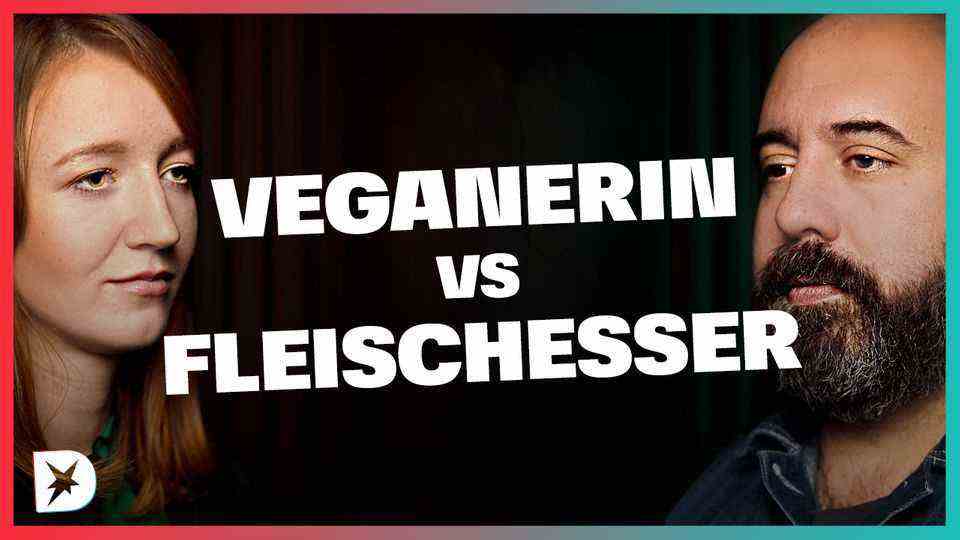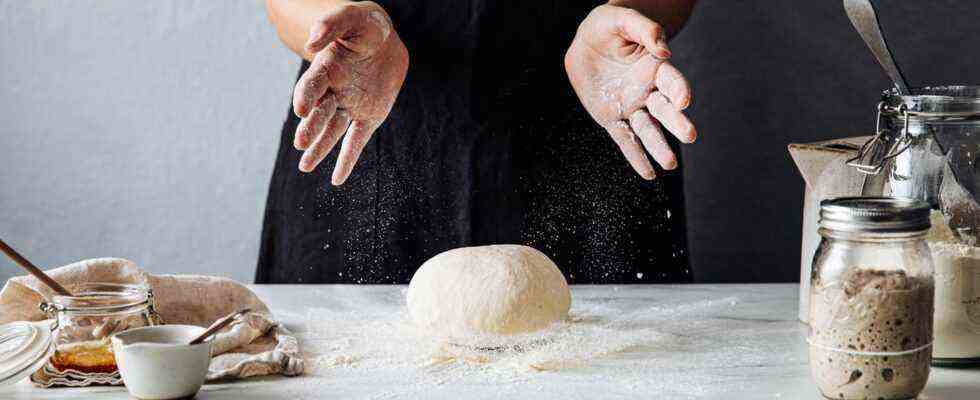Do you need eggs, milk and butter for baking? Not necessarily. We will show you which vegan alternatives are best suited for further processing. So you can confidently do without animal products when baking.
Baking without animal products – is that OK? After all, a well-known nursery rhyme from 1840 taught us which ingredients are essential for a successful cake: Bake, bake cake, the baker has called, if you want to bake good cake, you have to have seven things: eggs and lard … stop – here it’s already starting.
In addition to eggs and lard, the popular nursery rhyme calls for milk. And how do you replace butter? After all, it ensures a creamy and soft consistency, holds the mass and makes it supple. Here you can find out which vegan alternatives can replace eggs, butter, milk and the like.
2.6 million Germans are vegan
People’s perception and awareness have changed fundamentally in the past few years. Living vegan or vegetarian is no longer a niche phenomenon and is becoming more and more socially accepted. A current Statista graphic based on a survey by the Institut für Demoskopie Allensbach (IfD) shows that around 41 percent more people followed a vegan diet in 2020 than in 2016. A total of 2.6 million people eat vegans in Germany vegan.

While vegetarianism describes a meat-free diet, the term veganism includes the avoidance of any animal products (including milk and eggs). Reasons and motives to eat vegan are varied and very individual. In addition to ecologically sustainable aspects in times of climate change, aspects such as general health awareness, ethics and, to a large extent, support for animal welfare or general animal welfare play a key role.
This is how vegan baking works
The interest in vegetarian and vegan products is growing steadily. Many people now often and gladly resort to alternatives. They enjoy integrating more plant-based products into their diet.
Important for the mission “vegan baking”: The joy of experimentation and openness to new things. Those who are open-minded and get involved with the new baking ingredients will be rewarded with vegan delicacies.
How can eggs be replaced?
Let’s start with the supreme discipline: the vegan egg substitute. You can now buy vegan egg substitutes as a powder in well-stocked organic and supermarkets. The powder usually consists of various flours such as sweet lupine flour, locust bean gum, corn flour and various vegetable proteins such as flaxseed or sunflower protein and is simply mixed with a little water and processed further. In addition to the purchased version, you can also make egg substitutes yourself.
To do this, mix two tablespoons for one egg Potato or corn starch with three tablespoons of water. The tasteless binding agent not only goes well with vegan cakes, but can also be used in savory baked goods.
Also Flax or chia seeds can replace eggs. One tablespoon of the seeds is mixed with three tablespoons of water. The resulting mass has an optimal binding quality and is even suitable for making very sticky dough, for example for cookies.
Aquafaba, The soaking liquid from chickpeas and beans can also be used very well instead of eggs. You need about three teaspoons of aquafaba for one egg. When opened, Aquafaba can also be used as a substitute for egg whites. To do this, mix 100 milliliters of the liquid with half a teaspoon of tartar baking powder and a splash of lemon juice until a stiff, snow-like mass is formed.
In addition, eggs can also be easily passed through Fruit puree substitute. The disadvantage here is that you can clearly taste the taste of the fruit in question. In some baked goods, however, the alternatives give a delicious aroma and thus contribute to the taste. In a moist sponge cake, for example, an egg can be replaced by half a pureed ripe banana. The banana does not bind the dough, but makes it much more fluffy and moist. Applesauce is also ideal for juicy vegan cakes and muffins and makes the dough looser.
Fluffy cakes can be served with Vinegar and baking soda tie. An egg is replaced with a tablespoon each of vinegar and baking soda. Don’t worry, the inherent taste disappears completely when you bake.
Silken tofu consists of the same ingredients as natural tofu – soy, water and coagulant. The difference, however, is the higher proportion of liquid that makes the silken tofu so nice and creamy. 75 grams of silken tofus replace an egg. The moist consistency and the neutral taste make it the perfect egg substitute in, for example, chocolate mousse.
Vegetable milk alternatives
There are now milk alternatives like a dime a dozen. In almost every supermarket, discounter and even in the drugstore you will find a wide variety of plant-based drinks. From soy milk to almond or hazelnut milk to oat milk – there is almost nothing that doesn’t exist. Vegetable milk alternatives based on peas or lupins are also becoming increasingly popular and score with their incomparable creaminess. As a rule, cow’s milk can easily be replaced one-to-one with any plant-based drink. Nut or caramel biscuits, for example, give almond or hazelnut milk a great taste and sweetness. Soy milk, on the other hand, makes the dough fluffy, juicy and, like all plant-based drinks, ensures that it never becomes dry.
Vegetable cream
Plant-based cream substitutes can also be found in most supermarkets. Based on oats, soy or rice, the products are not only ideal for cooking, but are also a reliable substitute for cream when baking. Alternatively, you can easily make vegan cream yourself. For example off Coconut milk. To do this, remove the thick white coconut portion of a well-chilled can of coconut milk with a high fat content and stir immediately with the mixer until stiff.
For whipped cream, you can whisk whippable soy cuisine with a packet of cream stabilizer and a pinch of salt with the hand mixer until the vegan cream is stiff. One advantage: unlike cream made from cow’s milk, soy whipped cream cannot be turned into butter.
Yoghurt and quark substitutes
There are now numerous vegan yoghurt and quark alternatives on the shelves of supermarkets. The alternatives range from the well-known soy yoghurt to almond, coconut or oat-based products, to yoghurt or quark made from lupins. You can also easily make vegan yogurt yourself. You can find out how this works here.
Instead of butter
The simplest substitute for butter is to use margarine. Make sure that this is really purely vegetable and does not contain any additives such as whey, fish oil or E 471, an additive made from animal fats.
Butter can also do this without any problems oil be replaced. 75 to 80 milliliters of oil, for example rapeseed or sunflower oil, replace 100 grams of butter or margarine. Nut butter can replace butter in the same proportion. Important: The inherent taste of peanut, hazelnut or cashew butter remains in the baked goods. Almond butter is the most tasteless option.
If you like it lighter, you can replace 100 grams of butter with a mixture of 120 oat yoghurt and a tablespoon of semolina.

gelatin
We find gelatine not only in gummy bears, it is also a popular baking ingredient: Whether for berry cakes, fruit tarts or fruity fillings – the gelling agent ensures stability. However, since gelatin consists of animal connective tissue, it is not vegan.
Agar Agar is a herbal gelling agent made from dried seaweed. As a powder, it is heated or soaked in water before being used in baked goods. It is also tasteless and also contains minerals and fiber. Important: The end result is usually a little firmer than the result with gelatine.
Carrageenan represents another gelatin substitute. It consists of red algae and is mainly used as a thickener in the food and cosmetics industries. It remains somewhat more liquid than gelatine and is therefore more suitable for jellies or light creams.
Guar gum also belongs to the category of thickeners. It is obtained from the seeds of the guar plant. It binds cold and warm dishes and is therefore particularly suitable for the preparation of ice cream, jams or creamy dishes. Conventional thickeners like Starch made from potatoes or corn are also used in vegan kitchens. They can be heated and then used as a binding agent in, for example, cakes or sauces.
It also provides pectin It is a vegan alternative to gelatine. It is obtained from the cell walls of leftover apples or lemons, is therefore rich in fiber and is particularly suitable for making jam, as it gels particularly well with sugar and lemon juice.
Sources: Statista
Milk frother test: Here is the milk frother comparison.

